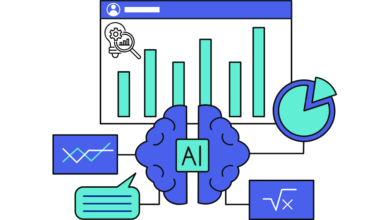“Yesterday.”
That’s often the answer I give to business leaders who ask me about the best time to adopt artificial intelligence (AI).
After all, IBM calls it ‘potentially the most powerful technology businesses have ever had access to’. Research shows it promises to transform profitability over the next 15 years. And with two-thirds of companies accelerating their AI strategy in 2021, it’s no wonder futurists predict the deadline for gaining a competitive advantage from AI to be just two years away. And yet, adopting AI is only the beginning.
Once we’ve added artificial intelligence to our business’s arsenal, it’s easy to think our work is done. After all, isn’t that the big benefit of AI? To help us automate routine tasks and sit back, relax, and focus on other projects? Yes…and no. It’s easy to talk about AI’s initial advantages—but not many of us discuss how to keep it successfully up and running.
We need to think of AI deployment as a garden that needs constant care and attention. If we leave it alone for too long, our grass overgrows, our flowers wilt, and weeds encroach. AI needs to be tended to in just the same way—with risky biases and glitches otherwise ready to sprout through.
So, let’s explore the key steps to caring for artificially intelligent systems after your deployment – and enjoy the transformational potential of this tool long into the future.
1. Review your processes to reduce AI biases
Human biases, also known as cognitive biases, are well-documented. These subconscious decisions affect our judgements thousands of times a day, from choosing news outlets that reinforce our opinions, to flipping a coin and basing our guess on previous results. Since artificial intelligence is developed by humans, similar biases can creep into AI too. Take Amazon’s ill-fated recruitment tool.
In 2014, the company built AI algorithms to review and rate job applicants’ CVs, so recruiters could focus on interviewing the top candidates. However, to create the system, the developers used data from job applications submitted over the previous ten years, most of which came from the tech industry’s male-dominated workforce. As a result, Amazon’s AI taught itself that male candidates were preferable, began penalising applications from women—and the project was eventually disbanded.
To prevent such biases from damaging our businesses, we must constantly review our AI systems. Unfortunately, there are no quick fixes, so let’s consider the following initial steps:
- Evaluate your AI to consider where potential biases could occur – such as in recruitment, or advertising.
- Establish diverse teams and tools to test bias in your processes. (These teams should preferably be separate from the AI’s developers to ensure independent validation.)
- Decide on situations where automatic AI decision-making can be used safely in your business, and others where human involvement is still required.
Once completed, you should be far better placed to reduce AI bias and even contribute your findings to wider bias research. But you mustn’t stop there.
2. Watch out for changes that could weaken your data models
Remember, AI models are usually programmes or algorithms built to use data to recognise patterns, and either reach a conclusion or make a prediction.
Once designed, paid for, and implemented, it’s easy to assume that these models will stay smart forever. Instead, they nearly always require regular human intervention. Why? Let’s look at a few examples:
- It’s likely that the technology your organisation uses in day-to-day operations is regularly changed and upgraded
- Your company might have uncovered new intelligence about your customers, such as levels of interaction with a recently launched product
- Your business’ strategies may change – for example, you might switch focus from reducing production costs to investing in a quality customer experience
Any of the above changes could impact the accuracy of your algorithms and hurt the resulting decisions that your business may take. So, you need to encourage the constant alignment of AI with your business’ approach and goals. But what does it take to keep these models smart?
3. Care for your models daily to support future success
Now we’ve seen that AI requires habitual intervention, let’s look at how you can keep your systems fresh and effective.
Just like physical tools such as laptops, we must also allocate a budget for AI wear and tear. Set aside funds in your annual spending forecasts for AI repairs and improvements, to ensure your business stays competitive with industry standards. It’s important to spend on talent, too – employing in-house or outsourced AI specialists gives you the peace of mind that your systems will stay operational and up-to-date.
Where possible, avoid ‘technical debt’ by focusing on gradual AI improvements, rather than waiting for an issue to flare up and then facing a grueling system overhaul. And finally, strive to create an AI-aware culture in your workplace. Educate your employees on how your AI systems work, why they’re reliable, why they’re to be trusted rather than feared – and that they’re not a replacement for their jobs.
A workforce that co-exists with AI breeds a stronger support system, with more people ready to spot issues and improvements and use artificial intelligence to its full potential. After all, returning to my garden analogy, the more hands that plant in our AI soil, the greater our businesses will grow.




